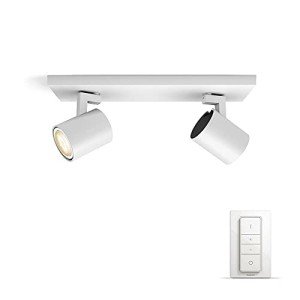Interior Lighting in the UK: A Comprehensive Guide
Interior lighting plays an important role in producing an atmosphere, improving functionality, and revealing individual design within homes and companies. In the UK, where the weather can be unforeseeable, efficient lighting is not only about aesthetics however also about making spaces feel warm, welcoming, and useful. This article looks into various aspects of interior lighting, including types, patterns, tips, and regularly asked concerns.
Understanding the Importance of Interior Lighting
Lighting is often thought about the backbone of interior decoration. It affects state of mind, performance, and the viewed size of areas. The best lighting can:
- Enhance the architectural features of a room.
- Emphasize artwork and design.
- Enhance security and security.
- Influence performance in work areas.
- Create a comfortable atmosphere for relaxation.
Types of Interior Lighting
Efficient lighting style typically includes three primary kinds of lighting: ambient, task, and accent.
1. Ambient Lighting
This is the main source of light in a room, providing general lighting. Typical sources include:
- Ceiling-mounted fixtures
- Chandeliers
- Recessed lighting
- Soft wall sconces
Ambient lighting creates a structure from which other lighting types can build on.
2. Job Lighting
Job lighting focuses on particular areas to facilitate activities such as reading, cooking, or working. This kind of lighting helps to decrease eye stress and can dramatically impact performance. Common sources consist of:
- Desk lamps
- Under-cabinet lights in kitchen areas
- Checking out lamps beside beds
- Track lighting intended at work surface areas
3. Accent Lighting
Accent lighting includes drama and highlights particular things or areas, such as art work or architectural features. This kind of lighting can produce visual interest and depth in a space. Sources consist of:
- Picture lights
- Decorative lamps
- Uplighters
- LED strip lights along racks
Using a mix of these lighting types can lead to a well-balanced and multifunctional space.
Popular Lighting Trends in the UK
The interior lighting landscape in the UK continues to progress, influenced by design patterns, technology, and customer choices. Here are some popular trends to see:
- Smart Lighting: The development of smart innovation has actually transformed how people handle lighting in their homes. Smart bulbs and systems like Philips Hue enable users to manage brightness and color temperature by means of their smart devices.
- Minimalist Designs: Sleek, easy designs that mix flawlessly with interiors are dominating the marketplace. Pendant lights with delicate frames, LED strips, and geometric shapes are particularly fashionable.
- Industrial Lighting: This pattern showcases raw, exposed products. Metal fixtures and Edison bulbs use a vintage touch that is both trendy and practical.
- Eco-Friendly Options: With increasing awareness of sustainability, many customers are turning to energy-efficient LED choices and fixtures made from sustainable products.
Tips for Effective Interior Lighting Design
Creating an efficient lighting strategy needs thoughtful consideration of numerous factors. Here are some tips:
- Consider the Purpose of Each Room: Every space has a different function. Consider what activities will take place and what type of lighting will support those activities.
- Layer Lighting: Employ numerous types of lighting within a room to develop depth and flexibility. Integrate ambient, task, and accent lighting to improve both aesthetics and performance.
- Use Dimmers: Dimmers enable control over brightness levels, making it possible for users to change lighting according to mood and time of day.
- Include Natural Light: Make the most of natural source of lights like windows. Use light, reflective colors for walls and furnishings to maximize brightness.
- Believe About Color Temperature: Different color temperatures (determined in Kelvins) develop various environments. Warmer temperature levels (around 2700K-3000K) are relaxing, while cooler temperatures (4000K+) lend a more medical or energetic feel.
Interior Lighting Mistakes to Avoid
To produce a well-lit area, it's vital to avoid common lighting mistakes. Here are some mistakes to expect:
- Underestimating Wattage: Insufficient wattage can lead to dim, unwelcoming spaces.
- Neglecting Scale: Fixtures that are too small for a room can keep an eye out of place, while oversized fixtures can overwhelm an area.
- Over-reliance on Ceiling Lights: Relying entirely on overhead lighting can produce uninviting shadows; balance with extra lighting types.
- Poor Placement: Misplaced lights can create areas that are too brilliant or too dark. Plan placements thoughtfully.
FAQ Section
1. What is the difference in between warm white and cool white light?
Warm white light (2700K to 3000K) creates a cozy, welcoming atmosphere, perfect for living rooms and bed rooms, while cool white light (4000K to 5000K) is more fit for work areas as it boosts concentration and clearness.
2. How can just click the next document make the most of natural light in my home?
To optimize natural light, usage light-colored walls, tactically location mirrors to reflect light, and go with sheer window coverings that enable sunshine to pass through.
3. How do I pick the right lighting fixture?
Think about the size of your space, the style of your decoration, and the function of the location. Make sure the scale of fixtures complements the room and matches the general aesthetic.
4. Are LED lights much better than traditional bulbs?
Yes, LED lights are more energy-efficient, have a longer lifespan, and can offer a variety of color temperature levels, making them a more sustainable lighting choice.
5. What should I do if certain locations of my room stay too dark?
Consider including additional job or accent lighting to brighten those areas. Floor lamps, wall sconces, or even strategically positioned table lamps can assist minimize dark areas.
Interior lighting is a necessary aspect of home and service design across the UK. Comprehending the different types, present trends, and best practices can assist home owners in creating areas that are not just trendy but likewise practical. With thoughtful factor to consider and preparation, reliable lighting can change any environment, improving both atmosphere and use for many years to come.

